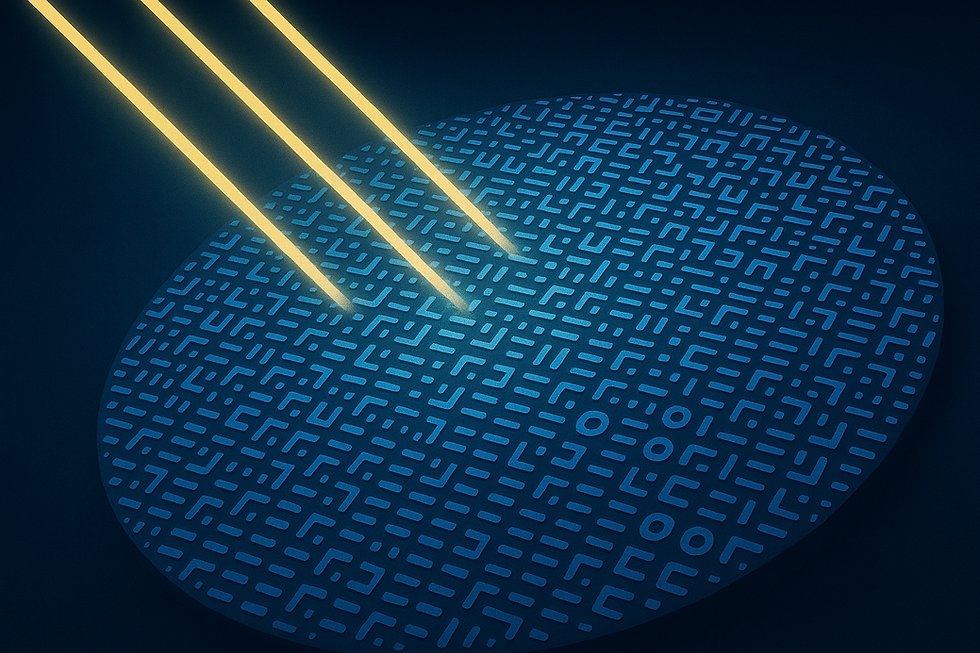Nanostructures: Building the Future with Small Pieces
- Kartik Buddha
- May 8, 2023
- 3 min read
Updated: May 11, 2023
As technology continues to advance, the need for smaller, faster, and more efficient devices becomes increasingly important. This is where nanostructures come into play. These tiny structures, on the scale of just a few atoms or molecules, have the potential to revolutionize industries ranging from electronics to medicine. In this blog post, we will explore the world of nanostructures, their importance, and the various ways they are created.
What are Nanostructures?
Nanostructures are objects that have at least one dimension in the nanometer range, typically between 1 and 100 nanometers. They can be made from various materials such as metals, semiconductors, and polymers. Due to their small size and increased surface-to-volume ratios, they exhibit unique properties that are not found in larger objects, such as quantum confinement and surface effects. These properties make them highly desirable for various applications, from energy storage to drug delivery. Examples of nanostructures include nanoparticles, nanowires, nanotubes, and nanosheets.

Why do we care about creating Nanostructures?
Nanostructures have many potential applications in various fields, including electronics, medicine, energy, and materials science. For example, in electronics, nanostructures are used to make faster and more efficient transistors. In biomedicine, nanostructures are used to deliver drugs directly to cancer cells while sparing healthy cells. Nanostructures are also being used in energy applications such as solar cells, where they can capture more sunlight and convert it into electricity more efficiently.
Different Ways of Creating Nanostructures
There are several ways to create nanostructures, including top-down and bottom-up approaches. Top-down approaches involve carving or cutting down a larger material to create smaller structures. Examples of top-down approaches include lithography and electron-beam writing. Bottom-up approaches involve building nanostructures from individual atoms or molecules. Examples of bottom-up approaches include self-assembly, chemical vapor deposition and molecular beam epitaxy. Each method has its advantages and disadvantages, and the choice of method depends on the specific application.
A Brief History and Future Outlook
The history of nanostructures can be traced back to the discovery of the electron microscope in the 1930s, which allowed scientists to see objects on the nanoscale for the first time. In the decades since, there have been many breakthroughs in the creation and manipulation of nanostructures. The study of nanostructures began in the 1950s with the discovery of the properties of single crystal surfaces. The development of scanning tunneling microscopy in the 1980s allowed for the direct visualization of individual atoms and molecules.
Current Applications and Future Possibilities
Looking to the future, researchers are exploring new materials and fabrication techniques to push the boundaries of what is possible with nanostructures. Nanostructures are already being used in a variety of applications, including drug delivery, imaging, and energy storage. In the future, they have the potential to revolutionize various fields, including cancer treatment, quantum computing, and nanoelectronics. The potential applications for nanostructures are vast, and their impact on society could be profound.
Challenges and Limitations
Despite their promising potential, creating and utilizing nanostructures also poses significant challenges and limitations. These include scalability, reproducibility, toxicity, and cost-effectiveness. Additionally, controlling the properties of nanostructures is essential for their successful application, which requires sophisticated control systems and software.
Conclusion
Nanostructures are a fascinating and rapidly developing field with enormous potential for impact in various areas. The ability to create structures on the nanoscale is already leading to new discoveries and applications, and the future is full of exciting possibilities. As researchers continue to push the boundaries of what is possible with nanostructures, we can look forward to a future where small pieces have a big impact.





Comments